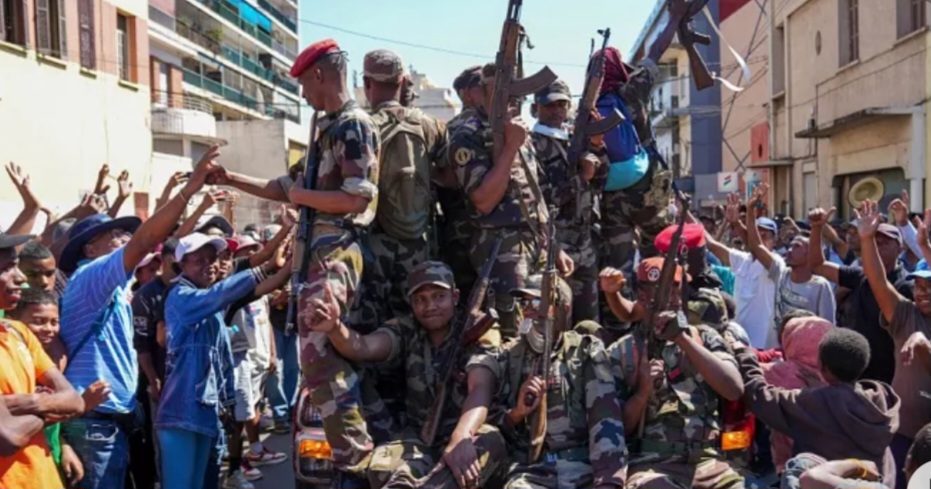
Ofure Akhigbe
A surreal scene unfolded in Madagascar’s capital on Sunday as soldiers were cheered by anti-government protesters, creating a volatile atmosphere after President Andry Rajoelina announced that an attempted coup was underway. The development marks a dramatic escalation in three weeks of youth-led demonstrations that have shaken the Indian Ocean nation.
In an extraordinary turn, military personnel stood alongside jubilant demonstrators in Antananarivo, with several army leaders openly declaring support for the protests.
The display of solidarity between troops and civilians came just hours after the president’s office issued a statement warning of “an attempt to seize power illegally and by force.”
Despite the heavy military presence, the day passed without immediate violence, leaving uncertainty over the president’s claim and the military’s true allegiance.
The current crisis—the most serious unrest in years—was sparked on September 25 by a youth-led movement known as Gen Z Madagascar.
What began as protests over electricity and water shortages has swiftly evolved into a nationwide outcry against alleged government corruption, nepotism, and worsening economic hardship.
According to the United Nations, at least 22 people have been killed since the demonstrations began, though the government disputes that figure. Civic groups and labor unions have since joined the movement, intensifying pressure on the Rajoelina administration.
The unfolding situation carries strong historical parallels. President Rajoelina himself first rose to power in 2009 through a military-backed coup, aided by the same elite CAPSAT unit whose commander now claims to control the armed forces.
His recent attempts to restore order—by dissolving his cabinet and appointing a military general as prime minister—have failed to calm public anger.
As Gen Z Madagascar, organized largely online and inspired by global protest movements, continues to rally, the nation watches anxiously to see whether history is about to repeat itself.
